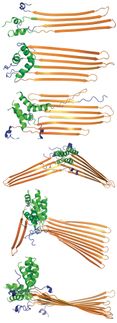Decisive steps in the initiation of programmed cell death revealed
Tübingen researchers have studied the formation of membrane pores that are critical to start the apoptosis program
Advertisement
When cells age or suffer damage, they are able to actively bring about their own pre-programmed death known as apoptosis. A desensitization of this process determines the change from a normal cell into a cancer cell. On the other hand, an over-functioning of apoptosis is associated to the onset of neurodegenerative diseases. Therefore a better understanding of the underlying mechanisms is extremely important. The protein Bax is known as a key regulator of apoptosis. Researchers headed by Professor Ana García-Sáez of the University of Tübingen and Professor Joachim Spatz of the Max Planck Institute for Intelligent Systems in Stuttgart have investigated the role of Bax proteins, finding more detailed information as to how they work.
The key step in apoptosis is the release of the protein cytochrome c and other apoptotic factors from the mitochondria into the cell interior. After this step, apoptosis induction is irreversible and cell’s fate is sealed. In order to allow this process, the mitochondrial membrane must be permeable. The research team has examined how the mitochondrial membrane becomes permeable. Their experiments on artificial membrane systems showed that the Bax protein initially is inserted into the membrane as a single molecule. Once inserted, these monomers join up in the shortest time with a second molecule of Bax to form a stable complex, the so-called Bax dimers. From these dimers larger complexes are formed. “Surprisingly, Bax complexes have no standard size, but we observed a mixture of different-sized Bax species”, says Dr. Katia Cosentino, a member of Professor García-Sáez team, “and these species are mostly based on dimer units”. These Bax complexes form the pores through which the cytochrome c exits the mitochondrial membrane.
The process of pore formation is finely controlled by other proteins. Some enable the assembly of Bax-elements, while others induce their dismantling. “The differing size of the Bax complexes in the pore formation is likely part of the reason why earlier investigations on pore formation conveyed in contradictory results” says Katia Cosentino. The researchers can now make some initial recommendations for medical intervention in the apoptotic process: In order to promote this cell “suicide,” it should be enough to initiate the first step of activating Bax proteins – because the subsequent steps of self-organization will then happen automatically. Conversely, from these new insights into the mechanism of pore formation can be concluded that apoptosis can be prevented when drugs force the dismantling of the Bax-dimers into their individual elements.























































